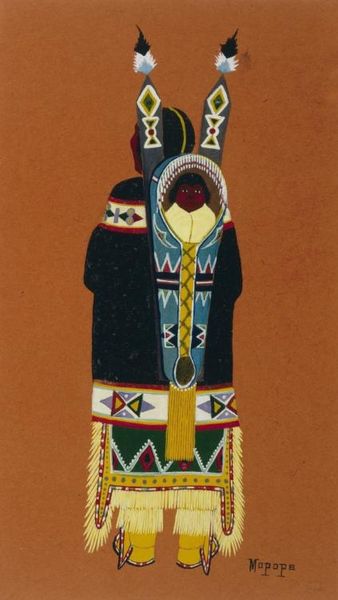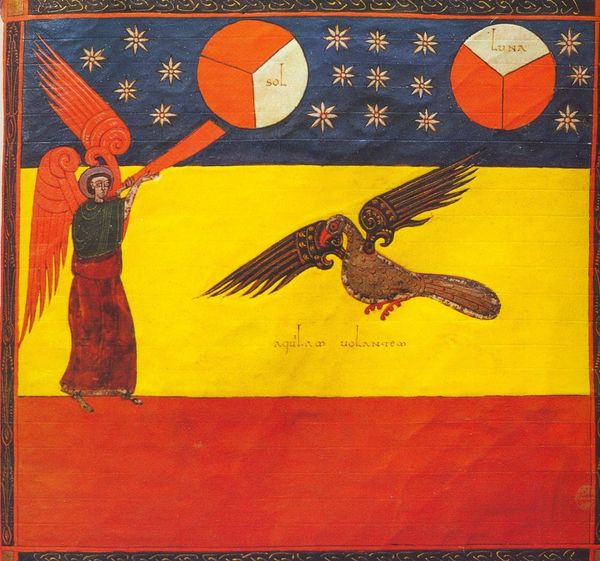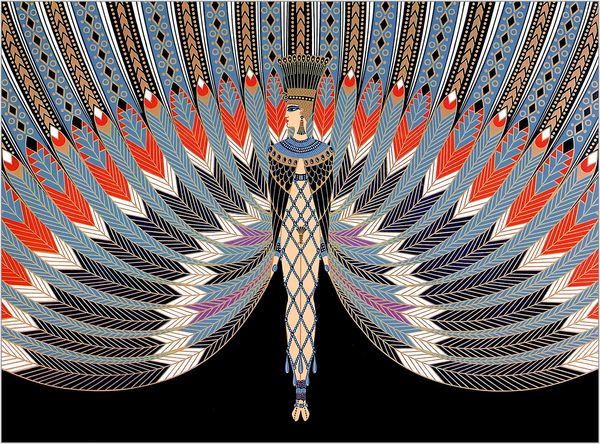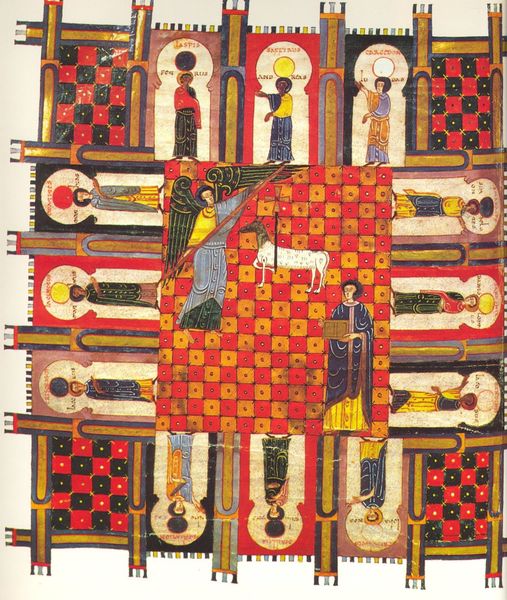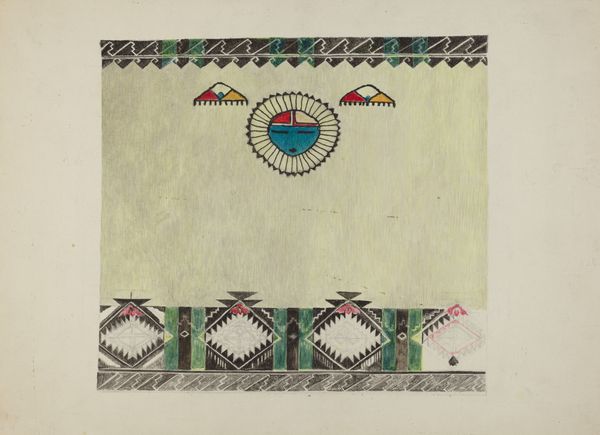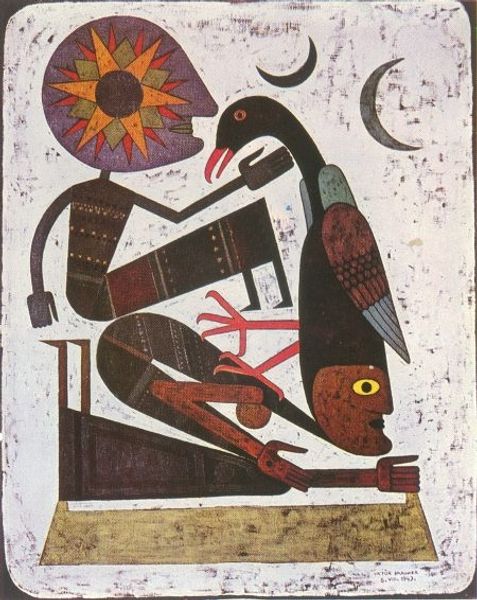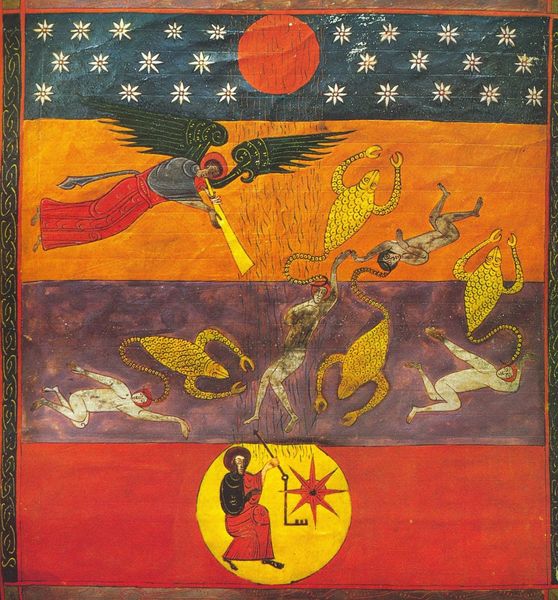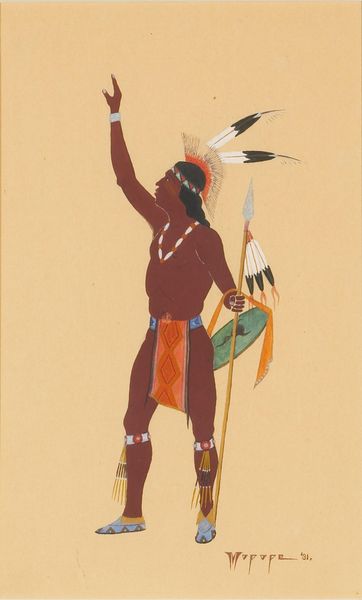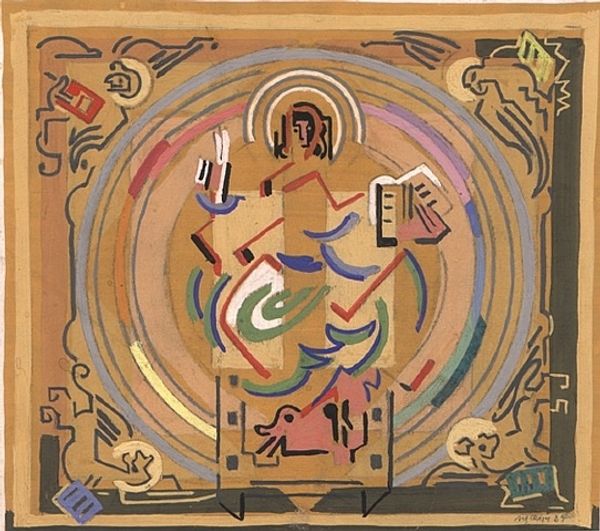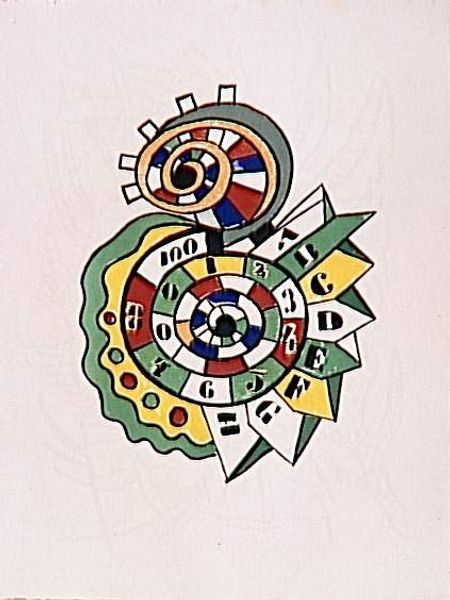
drawing, paper
#
drawing
#
figuration
#
paper
#
geometric
#
indigenous-americas
Copyright: Stephen Mopope,Fair Use
Curator: Let’s turn our attention to this stunning drawing by Stephen Mopope, created in 1932. It's simply titled "Untitled" and features acrylic paint on paper. What are your initial thoughts? Editor: Visually arresting! The contrast of the figure’s vibrant colors against the background creates a powerful impact. And that central circular form, like a sunburst, it immediately draws the eye. Curator: Indeed. Mopope was a member of the Kiowa Six, a group of Native American artists whose work significantly shaped early 20th-century Native American art. Consider the historical context. He's working during a period of intense cultural suppression and assimilation policies. Editor: So the subject is a powerful declaration. Speaking strictly formally, note the strategic placement of color, how the blues and yellows vibrate. The geometry provides structure but it is dynamic, the lines sharp. Curator: Absolutely. His art serves as a powerful act of self-representation. The figure’s regalia, so meticulously depicted, carries profound cultural significance, it reflects Kiowa traditions and worldview, preserving these. The outstretched wings invite considerations about freedom, spirit, and perhaps defiance. Editor: There is so much symbolic layering here. And if we return to that circle in the middle... Consider that visual organization. Are we seeing both a reference to a traditional shield, but also to the sun? It functions as a kind of grounding emblem, but also seems to evoke powerful concepts of life-force energy. Curator: Exactly! That convergence, between traditional iconographies and modern artistic approaches, shows the intersectional elements so powerfully. I think understanding the nuances helps appreciate the significance this piece has within a longer arc of Indigenous art and resistance. Editor: Well, my initial purely formal reading certainly proved limited, but the visual analysis helps us access that deeper well of meaning. Curator: Agreed, a close attention to its visual language reveals so much about what this work communicates to the past and to the present.
Comments
No comments
Be the first to comment and join the conversation on the ultimate creative platform.
